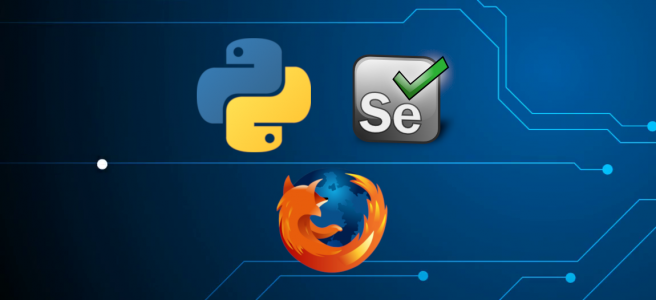Can Python Web Applications Be Tested Using Selenium? : Python is currently more popular than other modern programming languages. The interpreted and object-oriented programming language is also hugely popular among developers across the world as a strong server side scripting language. As Python enables developers to express concepts by writing less and readable code, it becomes easier for programmers to reduce the development time significantly. At the same time, the developers also have option to use popular web frameworks like Django to create high-performing and complex Python web applications rapidly. However, the developers still need to assess the look, feel and performance of the Python web application thoroughly to boost its popularity and profitability.
While testing the internet applications the developers have option to choose from a number of browser automation tools like PAMIE, PyXPCOM, windmill, SST and Selenium. But most developers prefer Selenium to other frameworks to test their Python web applications efficiently. Unlike other web browser automation tools, Selenium allows testing professionals to write test scripts in a number of languages including Python, C#, Java, PHP, Ruby and Python. So the testers have option to test the Python web application by writing test scripts in Python. There are also a number of reasons why developers across the world use Selenium for testing Python web applications.
Why QA Professionals Prefer Using Selenium for Testing Python Web Applications?
Supports Major Operating Systems and Web Browsers
At present, Selenium supports all major operating systems and web browsers. The framework currently supports both Microsoft Windows and Linux. Likewise, it is compatible with most popular web browsers like Firefox, Chrome, Internet Explorer, Safari and Opera. The compatibility makes it easier for QA professionals to test the Python web application tools across multiple platforms and web browsers without writing separate codes, or using additional test automation tools. Selenium further comes with features to generate and execute test scripts automatically across different web browsers and systems simultaneously.
Allows Users to Create Complete Test Automation Suite
The Selenium testing professionals can create a complete test automation suite by combining Selenium WebDriver and Selenium IDE. They can use Selenium WebDriver to quickly create browser-based regression automation suites and tests. Further, they can scale and distribute the test scripts across multiple environments. The Selenium IDE, on the other hand, makes it easier for testers to create bug-reproduction scripts rapidly. Thus, the QA professionals can combine distinct parts of Selenium to create a complete test automation tool, without requiring any licensed or third-party APIs.
Executes Tests Faster
To identify all bugs and performance issues in the web applications, QA professionals have to perform tests repeatedly and frequently. But the testers also have to complete all tests within a limited amount of time. Selenium allows testing professionals to take advantage of cloud-based testing grids to boost the performance of their test runs. In addition to optimizing the test infrastructure, these tools further enable testers to run parallel tests. Thus, it becomes easier for the testers to execute tests quickly and repeatedly. The testers also have option to choose from several open source cloud-based functional testing grids to avoid increased project overheads.
Requires Basic HTML Concepts
Selenium supports a number of modern programming languages. But while testing a Python web application, it requires only basic HTML concepts. HTML is used for describing a web page, whereas individual HTML tags represent document content. Thus, HTML tags decide how the content is appears on the web browsers. Selenium divides the HTML elements or attributes into three distinct categories, i.e., single, group and customized. It locates single elements by their id, link or link text, whereas the group elements are identified based on combined values or index property. So it becomes easier for testers to find out the location of the defect or bug. The feature makes it easier for them to identify the exact bugs and performance issues quickly.
Helps Testers to Address Maintainability Issues
In addition to creating and executing test scripts quickly, QA professionals are also required to maintain the test cases effectively. Selenium helps testers to overcome maintainability issues by structuring the automated test code using a pattern called page objects. The page objects focuses on the structure of HTML code of a particular web page instead of checking how the services are implemented. Thus, testers can take advantage of page objects to locate the code easily, navigate between various web pages smoothly, and making changes only once. As most Selenium code will be located inside page objects, the testers can easily increase the code base without adding fresh Selenium code.
Provides Selenium Python API
As noted earlier, Python supports several programming languages including Python. So the testers have option to write test scripts in Python. Also, they can use Selenium Python API to write acceptance and functional tests by accessing Selenium WebDrivers like common, support, chrome, Firefox, ie, remote and phantomjs. The most recent version of the API further supports multiple versions of Python including 3.2, 3.3, 3.4 and 2.7. It can further be accessed simply by downloading and installing the Selenium Python bindings. Thus, an organization can leverage the skills of existing Python programmers to perform acceptance and functional testing efficiently.
